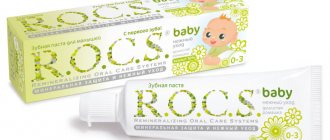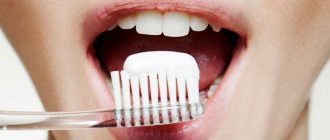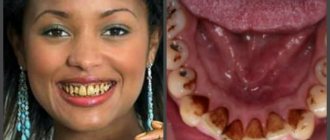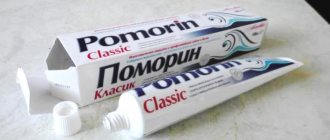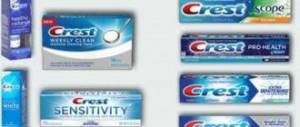Home>Services>Periodontology>Applying devitalizing paste
Service Questions and Answers Results from our clients Prices Promotions
Every person in his life is faced with the need to visit a dental clinic more than once. Some do this from a preventive point of view, while others are less fortunate and develop some kind of dental or oral disease.
One of the most unpleasant diseases, which causes its owner a lot of unpleasant moments and pain, forcing him to seek professional help, is pulpitis. It is an inflammatory process affecting a bundle (pulp) located inside the dental cavity, consisting of blood vessels and nerve fibers.
Application of devitalizing paste is a common method of treating pulpitis.
9 hours left until the end of the promotion
When is such a procedure necessary?
The procedure is also carried out when opening the pulp chamber due to mechanical damage to the tooth or due to inadequate dental interventions. In addition, surgery may be required if it is necessary to prepare teeth for prosthetics, when the likelihood of inflammation developing under artificial structures should be completely eliminated.
Types of pastes
The arsenal of medical products for dental devitalization includes:
- depulping pastes that contain arsenic compounds, as well as devitalizing pastes without arsenic, produced on the basis of formaldehyde;
- using the technique of electrochemical pulp necrosis.
Despite the pronounced toxic effects of arsenic, the need for precise dosing and strict adherence to the period of stay of medical preparations containing it in the pulp cavities, its use for pulp devitalization is quite advisable and justified by many arguments. Devitalizing pastes based on arsenic kill the pulp very reliably, painlessly and quickly.
Precautions when using Devit S paste
If the temporary filling has a poor marginal fit, there may be cases of leakage of the devitalizing paste. Most often, such situations occur in the upper jaw. In such situations, the patient feels the taste of creosote in the mouth. He needs to see his dentist immediately to have the leak repaired.
Considering that the drug contains paraformaldehyde, there is always the possibility of allergic and other individual reactions in the patient. It is necessary to establish the fact of an allergy to these compounds in advance.
Urgent treatment is also required if the symptoms of pulpitis intensify. Such situations are possible in two cases:
- During the work, the doctor did not open the pulp horn;
- The paste in the cavity was placed too tightly and puts pressure on the not yet devitalized pulp.
Technical features of applying paste
The operation to devitalize the dental cavity consists of applying a paste containing arsenic to the open horn of the pulp, which is collected on the tip of the probe. This volume is approximately 40 times less than a pinhead, based on the calculation that the maximum single dose is 3 mg and the maximum daily dose is 10 mg.
After application, the devitalizing paste is covered (without applying pressure) with a piece of cotton wool soaked in an anesthetic solution. The dental cavity is covered with a loose bandage of water dentin, which has a temporary purpose, but ensures absolute tightness of the dental cavity. Taking into account the size of the pulp chamber (depending on the number of tooth roots), the composition is removed from the cavity after 36 or 24 hours, but if chemical periodontitis occurs, the procedure is performed immediately.
In what cases and why is the paste applied?
Pulpitis is treated by using the paste in cases where the existing inflammation cannot be cured in any other way.
The dentist decides to use a devitalizing paste if the patient does not have any contraindications to the use of this method.
Among the contraindications are the following:
- pulpitis with the release of purulent contents;
- necrosis of the neurovascular bundle;
- obstruction or problems with the formation of tooth canals;
- individual intolerance to one or more substances included in the paste used.
Please note that the procedure is carried out with all the rules of accuracy and sterility, so you should not worry about getting injured or damaging the structure of the teeth.
Possible reactive pain
The patient is warned in advance about the likelihood of developing short-term (within 2 hours) reactive pain, and is offered to mitigate them with the help of Amidopyrine or bromine preparations.
In addition to quickly passing reactive pain, the use of pastes with arsenic acid compounds threatens the occurrence of severe chemical burns when it is washed out or the cavity is insufficiently sealed, up to necrosis (osteomyelitis). Another consequence of the use of arsenic pastes is the appearance of persistent toxic periodontitis, which is often observed with prolonged and excessive exposure to arsenic.
Thus, in order to avoid damage to the periodontium with the development of foci of necrosis during the use of arsenic, when calculating the dosage and exposure time, the dentist must evaluate such factors as the patient’s age and tooth weight.
Many people are interested in what the effect of devitalizing paste is. Scientific research has proven that the use of adequate dosages of arsenous acid, due to its diffusion into the periapical space, provokes not only the destruction of the dental pulp, but also stimulation of its stump, and also leads to the regeneration of periodontal tissue.
Composition of these funds
Arsenic acid (As2O3) is present in arsenic-based devitalizing pastes. Arsenic-free pastes, which are used for pulp devitalization, contain phenol, formaldehyde (formalin) and a combination of their derivatives. In arsenic-free pastes, formaldehyde powder is mixed with creosote, glycerin or petroleum jelly. Their effect is somewhat weaker and less reliable than pastes containing arsenic, and with an insufficient period of exposure, instead of necrosis of the dental pulp, only its mummification (sclerosation) can be achieved. However, the purpose of such manipulation may be precisely this effect: with the amputation technique, in the case of dental therapy in children, the sclerotic pulp, which is left in the microtubules, is aseptic and will no longer cause an inflammatory process.
Such devitalizing pastes include “Paraform”, “Paraformaldehyde”, “Trioxymethylene”, “Formalin”, “Asphalin” and “Triopasta”. The last three drugs are made on the basis of formaldehyde, however, the use of the latter turns out to be more effective when summing up the results of such a dental procedure, because during therapy using amputation techniques, the pulp stump prevents the diffusion of formaldehyde into the periapical spaces.
The use of, for example, asphaline paste most often leads to the development of reactive periodontitis. When using a paste containing paraformaldehyde, lidocaine and phenol, its effect lasts from 5 to 8 days, but has a lighter effect, without irritation or disruption of periodontal structures. There are no specific features when applying paraformaldehyde pastes - they are the same as for arsenic pastes.
Various manufacturers produce both arsenic-free devitalizing pastes and those with arsenic in their composition, which make it possible not only to achieve the expected effect, but also to plan a schedule for the patient to visit the dental office. For example, the use of “Devit-A” paste, which has a pronounced anesthetic effect, helps relieve severe pain during the treatment of acute pulpitis, “Devit-P” - to achieve mummification of the pulp of milk teeth and prevent its extirpation, and “Devit-S” - to use by the method of mortal amputation or exirpation in the treatment of residual symptoms of root pulpitis, both in temporary teeth and permanent ones.
Devitalizing paste "Devit"
As noted above, this brand of paste comes in three types and is used in various dental methods of dental therapy. It is used for pulp devitalization in the treatment of pulpitis during mortal amputation or extirpation, for the treatment of residual pulpitis, and is also used as an additional means for devitalization during repeated procedures after using devitalizing pastes containing arsenic.
What to pay attention to
After the paste is placed in the tooth cavity, and the effect of the anesthetic drug begins to end, pain associated with swelling of the pulp may temporarily resume. To relieve this pain, the doctor will advise you to take an anesthetic or prescribe a course of non-steroidal anti-inflammatory drugs.
Treatment of pulpitis can be carried out without the use of devitalizing paste. In such cases, the unkilled nerve is amputated surgically. This will require only 1 visit to the clinic.
It is also possible to prevent pulpitis. For this purpose, it is recommended to periodically visit the dentist and undergo a medical examination. This will help identify and treat the carious process at the earliest stages.
Any dental problem will be solved by the specialists of the Diamant dental clinic. Make an appointment today to restore the health of your teeth and oral cavity in time, because a healthy and beautiful smile is the basis of your attractiveness!
What does arsenic-free paste contain?
This arsenic-free paste contains:
- paraformaldehyde, which is an antiseptic that coagulates albumin and provides pulp devitalization;
- fiberfill;
- paste former;
- lidocaine hydrochloride, an anesthetic and reducing the risk of painful symptoms.
The use of Devit pastes ensures long-term devitalization of the pulp without irritation and pain, eliminating the need to re-treat the canals in order to neutralize arsenic salts, as when using arsenic pastes. Devitalization of the pulp occurs in 3-5 days, sometimes in 7 days. If the patient does not feel pain, filling can be done within 48 hours after using this devitalizing paste. The effectiveness of this drug is maximum today, especially when compared with arsenic-based pastes.
Reviews of these pastes
There are relatively few reviews of devitalizing pastes on medical websites, and they are left mainly by dental specialists who use such drugs in daily clinical practice. Dentists say that arsenic pastes are more reliable, but they are very dangerous to health and are not used in the treatment of children's teeth. Arsenic-free drugs such as Devit are the most popular, even though they do not have such strength. However, according to dentists, they do an excellent job with their main task, and in addition they effectively relieve pain, which is very important in dental therapy. Today they are most often used in dentistry.
Composition of Devit S paste
- Paste-forming substances;
- Fiber filler;
- Creosote (provides an effective antimicrobial effect);
- Lidocaine is a local anesthetic;
- Paraformaldehyde – ensures a painless devitalization process and has a pronounced antibacterial effect
The manufacturer guarantees the effectiveness of the drug. In most cases, it is possible to achieve the desired effect on the third to fifth day of use. The maximum period of devitalization is a week. If during the first two days the patient has no complaints of pain, canals can be filled and the tooth crown can be restored.

